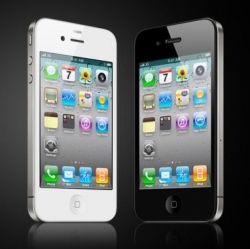
When it comes to thoroughly assessing the condition of someone’s eyes, it’s usually necessary to utilize large, expensive contraptions such as those found in an ophthalmologist’s office. While that’s OK in some situations, physicians in rural areas or developing nations might not have access to such technology.
Additionally, emergency room personnel typically need information on-the-spot, ASAP. That’s why two scientists from Stanford University have created the EyeGo system, which allows smartphones to do the job.
Developed by assistant professor of ophthalmology Dr. Robert Chang and ophthalmology resident Dr. David Myung, the system consists of two adapters that are simply added to an existing smartphone camera – one of them gets shots of the front surface of the eye, while the other focuses light through the pupil to get pics of the retina, along the back of the eye.
According to the university, EyeGo is designed to "make it easy for anyone with minimal training to take a picture of the eye and share it securely with other health practitioners or store it in the patient’s electronic record."
Myung built the first prototypes from a variety of inexpensive commercially-available components, including macrolenses and Lego bricks. Computer models of those prototypes were subsequently created, which were in turn used to make slicker 3D-printed versions of the adapters.
Those are now being tested in a clinical trial at the Stanford Emergency Department. A second study will use them to track the progression of eye disease in diabetics.
